In an era when automobiles were slated to change the world, Orillia was a player.
James Brockett Tudhope was born in Oro Township in 1858. He joined his father's carriage business in the 1880s. The business thrived and by 1902, the Tuhdope Carriage Co. Ltd. occupied a full three city blocks where Orillia City Hall is now situated.
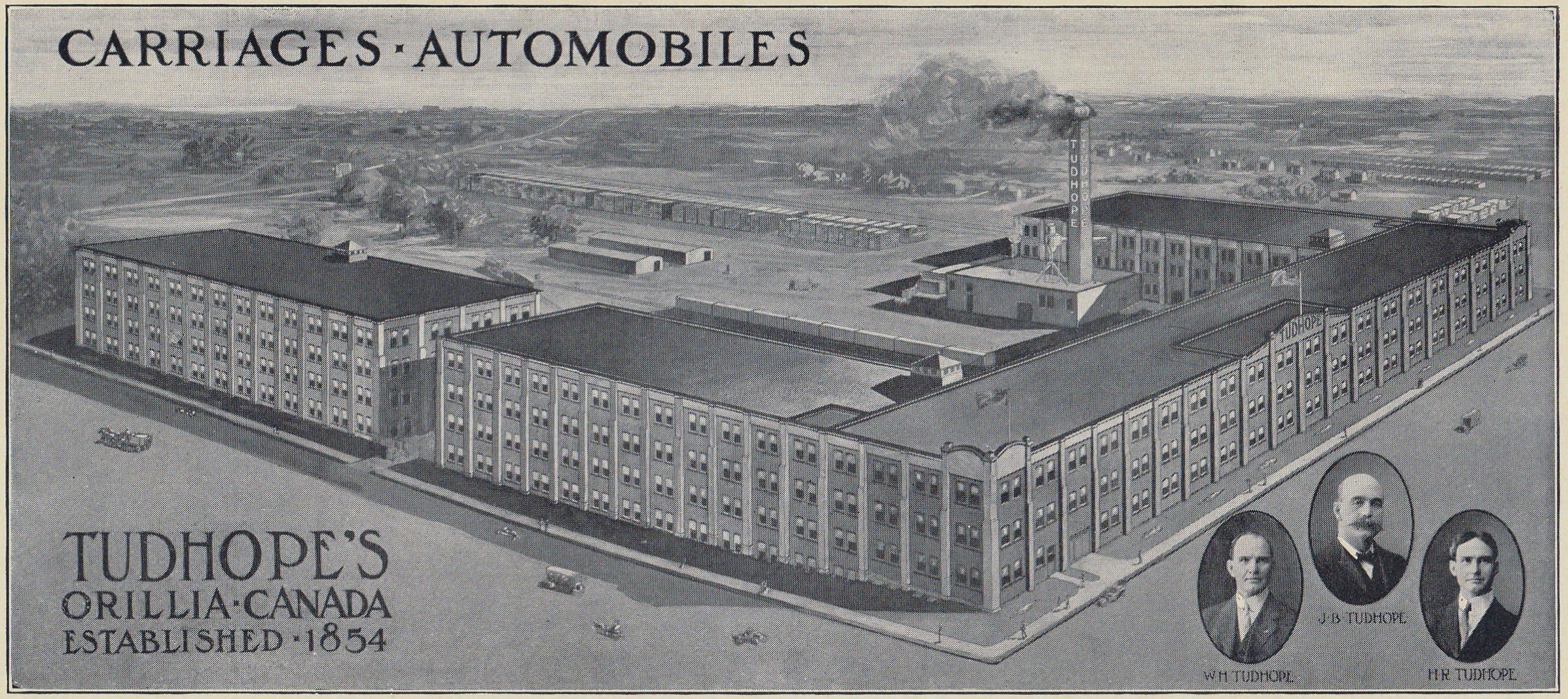
The Tudhope Anderson Company Ltd. (TACO) was formed in approx. 1906 and produced a line of wagons and farm equipment in the same facility - later establishing a large foundry at 255 West St. South (where Orillia's "Foundry Park" recreation facility is now located).
Some context for the automobile market in the early 1900s can be gleaned from information published on the Ontario Ministry of Transport website:
Ontario’s first automobile arrived in 1898 and the first provincial legislation governing automobile use came into effect in 1903. It included a 15-mile-per-hour (approximately 24 km/h) speed limit and a requirement for vehicles to be registered.
Ontario’s first 198 license plates were also issued in 1903. For several years the registration process was administered by a single clerk in the Provincial Secretary’s office. But it wasn’t until the famous Ford Model T started rolling off the assembly lines in 1908 that the automobile era was truly ushered in across North America. Ontario first issued driver's licenses in 1909, but only to chauffeurs -- those who drove vehicles owned by others.
In September 1908, J.B. Tudhope moved to extend the carriage business into automobiles. The first model entered production in 1909 and was based on a collaboration with the W.H. McIntyre Company of Auburn, Indiana. McIntyre provided the engines and Tudhope produced the chassis and coachwork.
The Tuhdope-McIntyre is classified as a "high wheeler" - a most basic version of a "horseless carriage". In contrast to many other cars of the time (e.g., the Ford Model T was introduced in 1908), the design was simple, easy to repair, and practical. Plus, the solid rubber tires meant blowouts and flats would never be a problem. The familiar look of a car that was basically a standard horse buggy with a concealed engine and chain drive to the rear wheels was popular in rural markets.
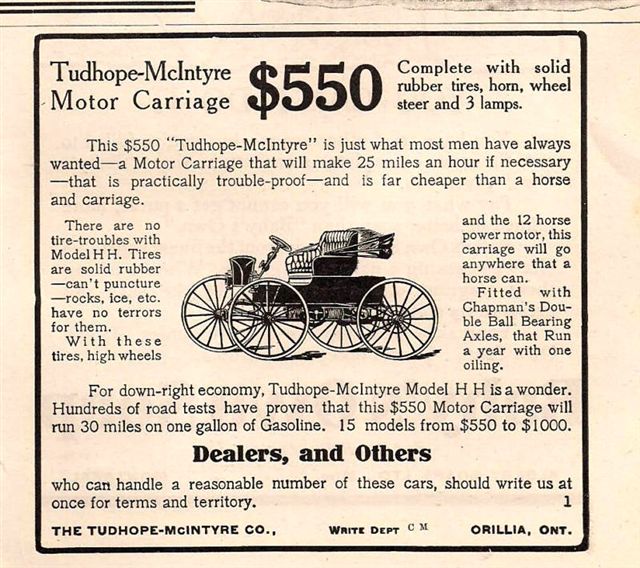
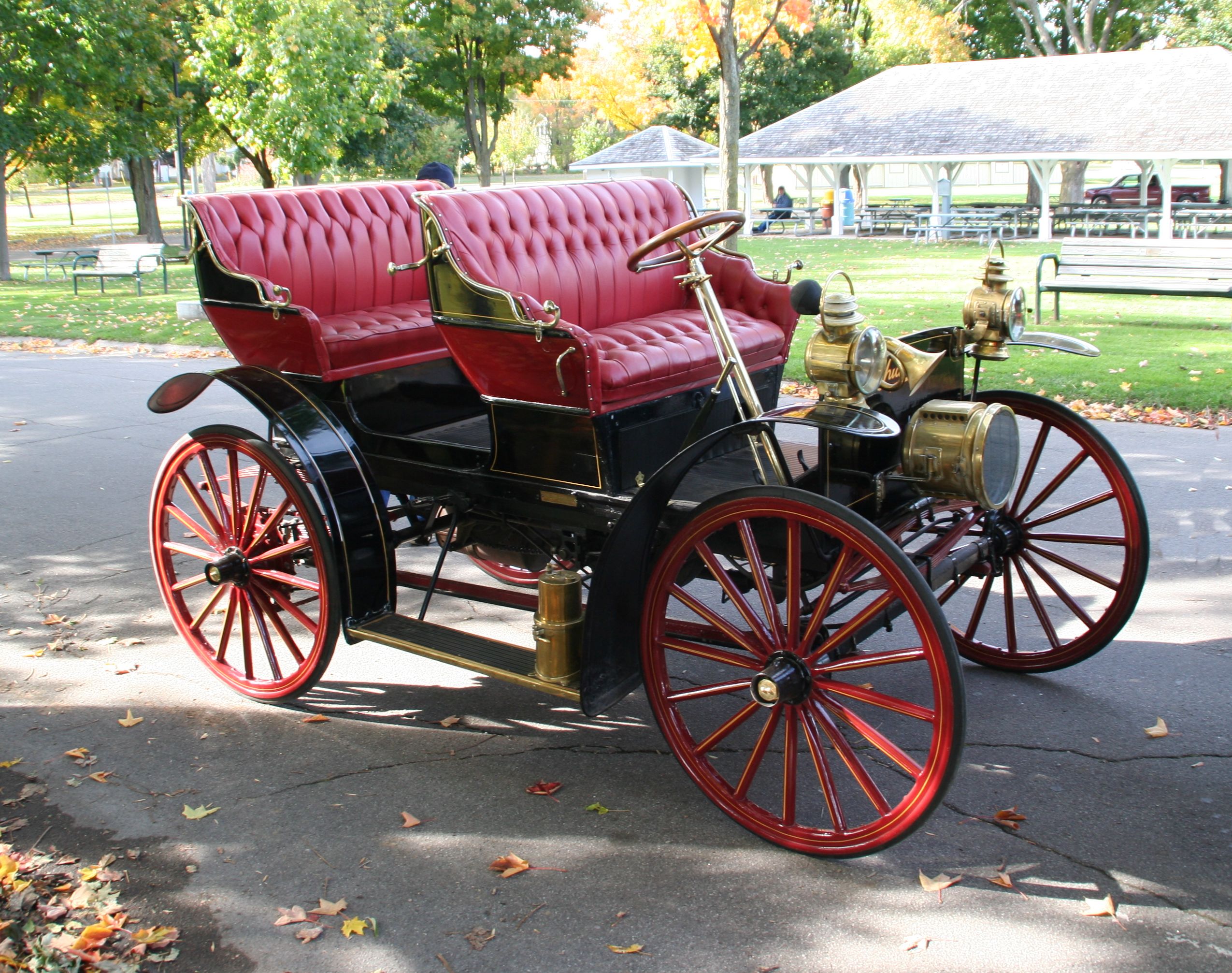
Tudhope produced approximately 500 of these vehicles before a disastrous fire destroyed the factory in August 1909. (Pictures and more information about this fire are available on our website under Postcard Memories: "Tudhope Fire 1909").
The company quickly rebuilt the plant, took the name Tudhope Motor Company Ltd. and switched to a more conventional design for its vehicles in a collaboration with the E-M-F Company of Detroit, Michigan (at the time, the 4th largest producer of automobiles in the U.S.)
Tudhope-Everitt models were introduced in 1910, based on the design of E-M-F's Everitt 30. The cars utilized a 4-cylinder, 30hp engine.
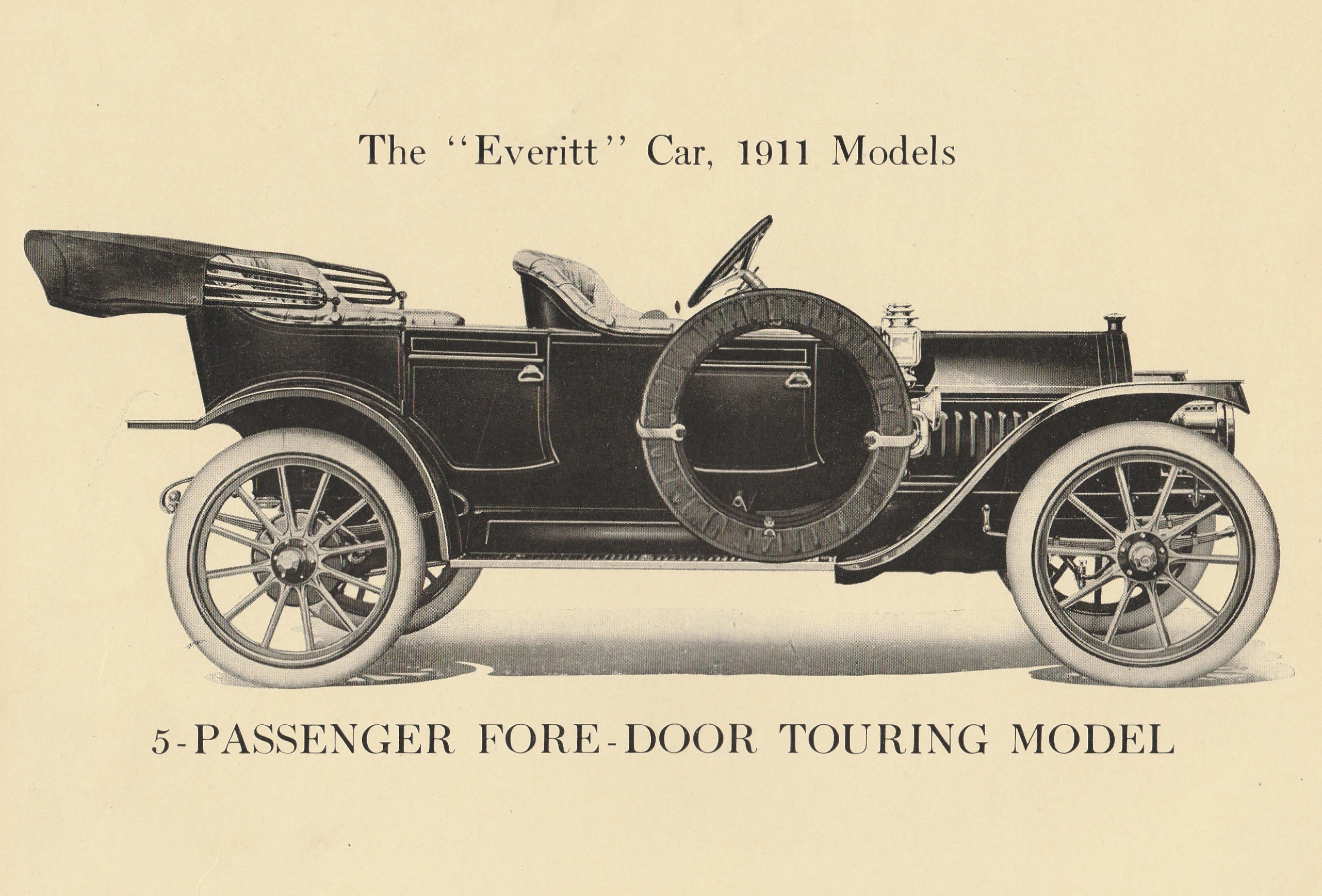
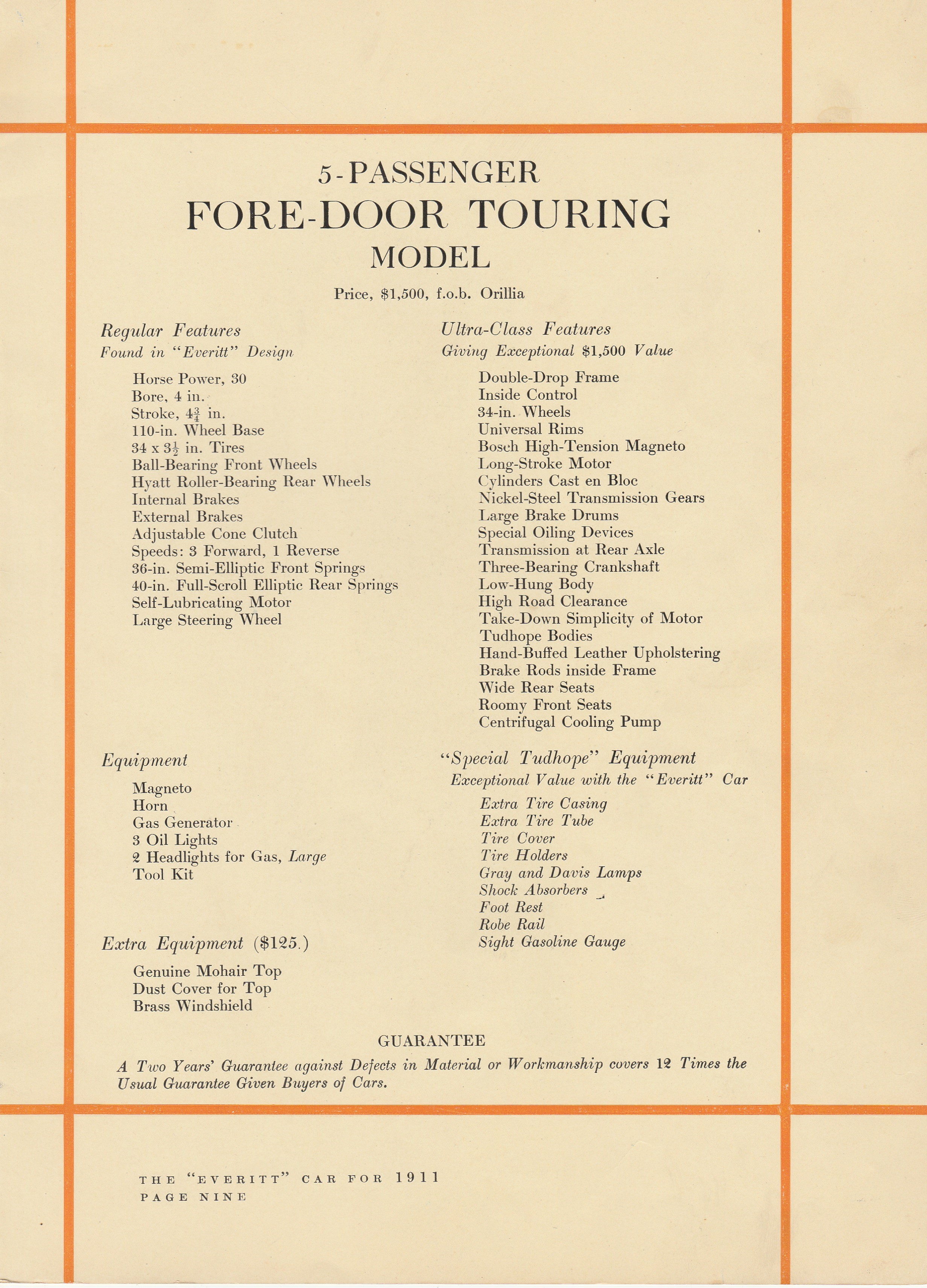
Studebaker of South Bend, Indiana had purchased all assets of E-M-F in 1910, but it wasn't until 1913 that E-M-F was completely rebranded to Studebaker.
In 1912, Tudhope Motor Company Ltd. introduced a new model featuring Canada's first homebuilt 6-cylinder engine - but the price was apparently prohibitive and within 2 years the company was facing bankruptcy.
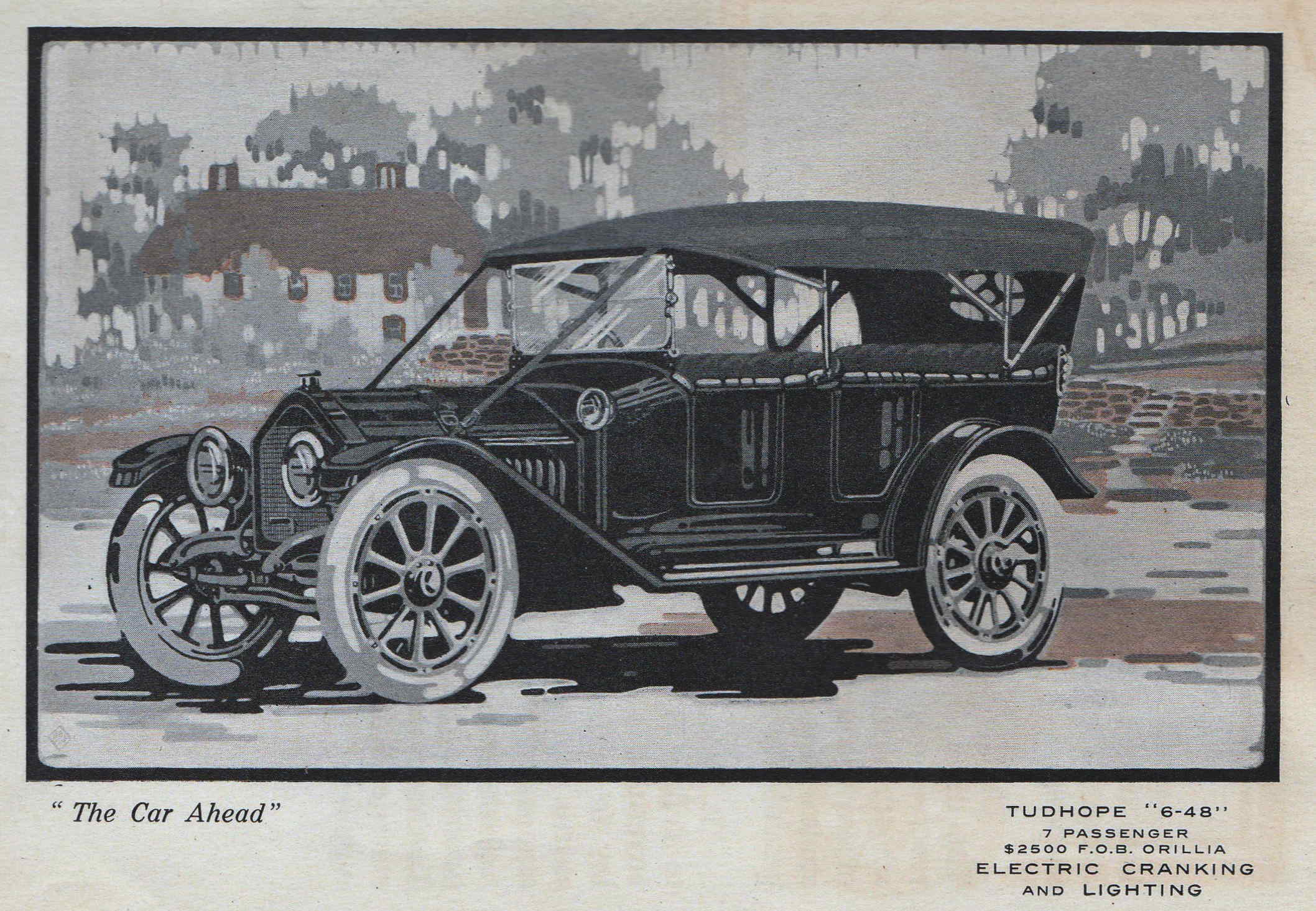
The final chapter for Tudhope Motor Co Ltd. and the creation of Fisher Motor Co. Ltd. is detailed in a post from the Windsor Public Library:
In 1914, Frank E. Fisher (a manager of the Studebaker plant in Walkerville) got together with F.W. Vollans to take over the bankrupt Tudhope Co. of Orillia and formed the Fisher Motor Co. of Walkerville.
Immediately the company began to sell Tudhope cars under the Fisher name--the cars were either already assembled or else put together from leftover parts.
By 1915 the company still had not produced their own car and instead used a Tudhope 4-36 as their demonstrator, a car that had nearly 10,000 miles on it.
Fisher left the company in April of that year and Vollans moved the company back to Orillia. War contract work kept the company alive through 1918 and after the war the company survived as an auto accessories supplier until 1928.
Plans were made to move the operation to Walkerville but this never took place. The company is listed in the Windsor city directory for 1914 but not in subsequent years. It continued operations in Orillia for some time after 1914.
For more than a decade after Tudhope Motor Co. had disappeared, Tuhdope's carriage company carried on until it was sold in 1924. TACO became OTACO in 1928.
Additional Information:
- An excellent synopsis of the early history of the Tudhope family in Orillia and region (spanning close to 200 years) is published by the Simcoe County Historical Association
- The breadth of contributions made by J.B. Tudhope to the development of Orillia can be appreciated by reviewing his induction into the Orillia Hall Of Fame and by reviewing his biography on Wikipedia
- After the end of WW1, Fisher Motor Company continued to operate for many years in Orillia. More information is published on our website under Postcard Memories: "Fisher Scoop", "Ice Cream Scoops", "The Piat Shell"
- Postcard Memories section of our website contains additional pictures related to Tudhope Automobiles: "1913 Tudhope 6-48 Postcard", "The Tudhope Carriage Plant"
- Our YouTube channel contains a video on the History of OTACO
- The Photos section of our website contains some pictures of our 1912 Tudhope Car on Parade.
